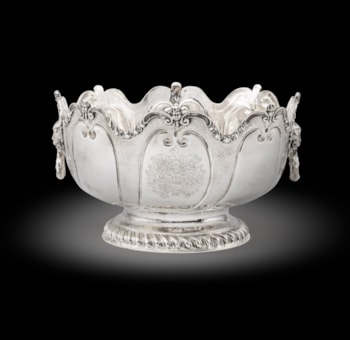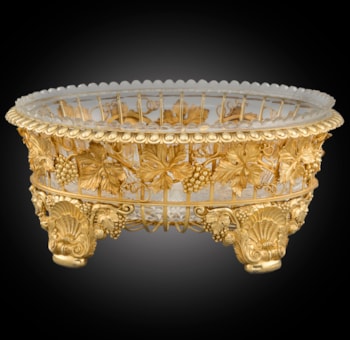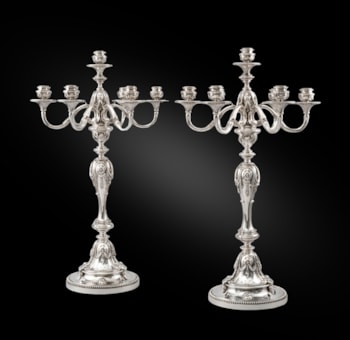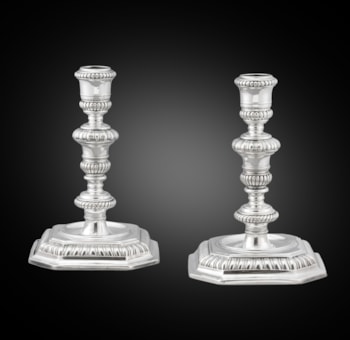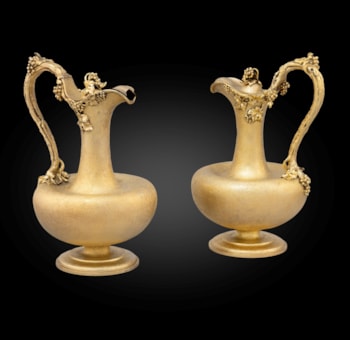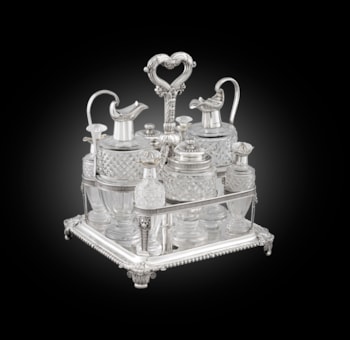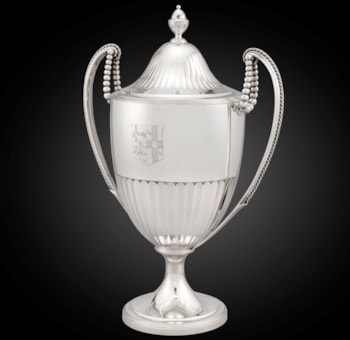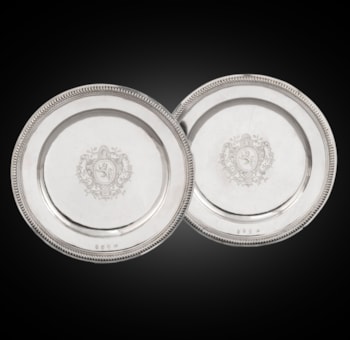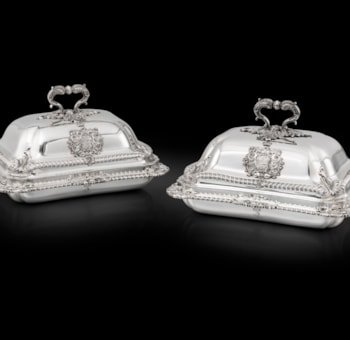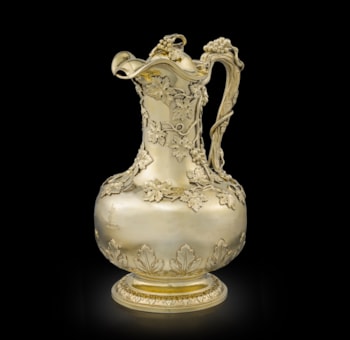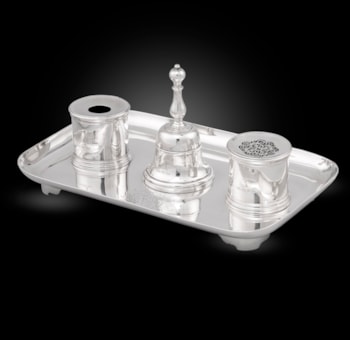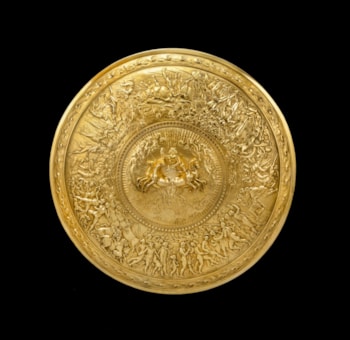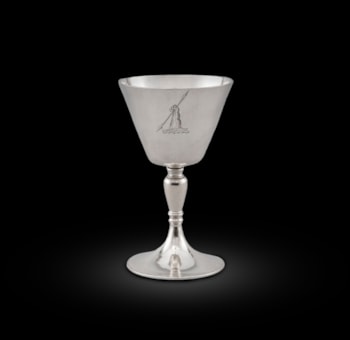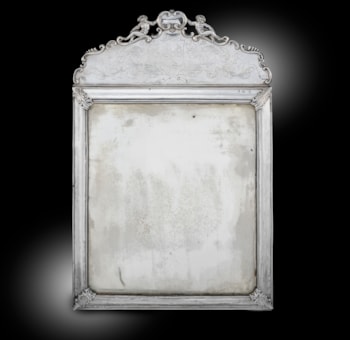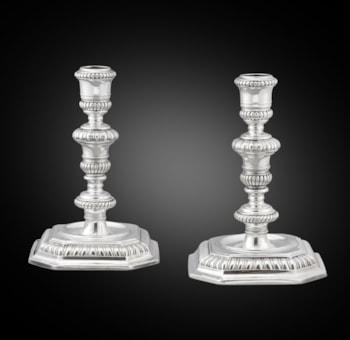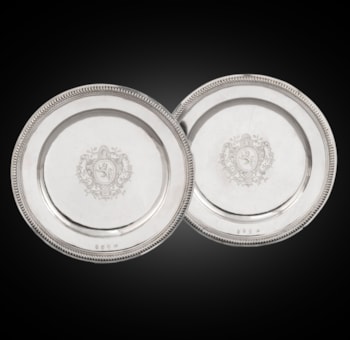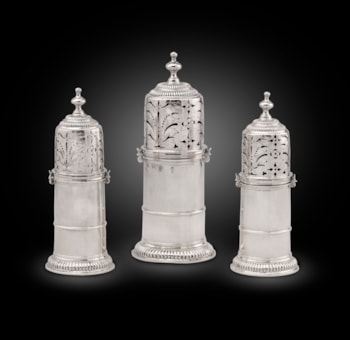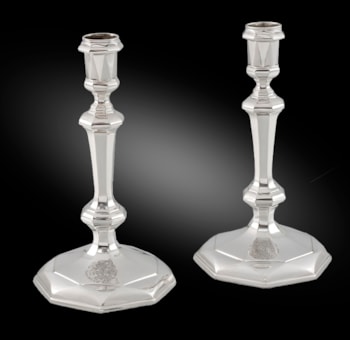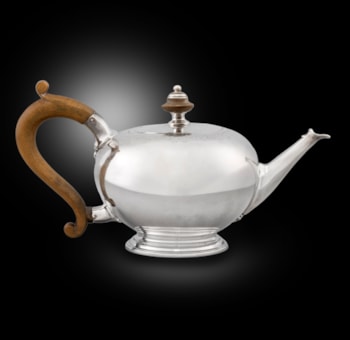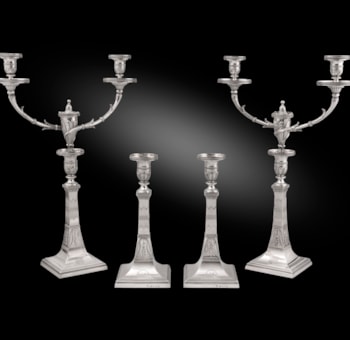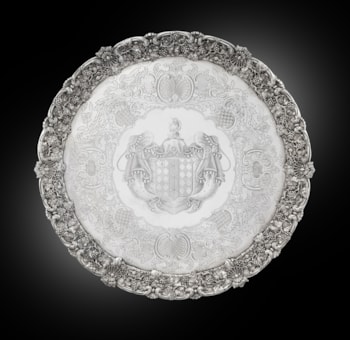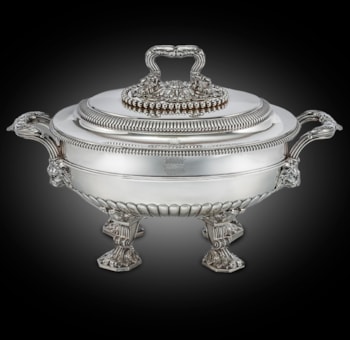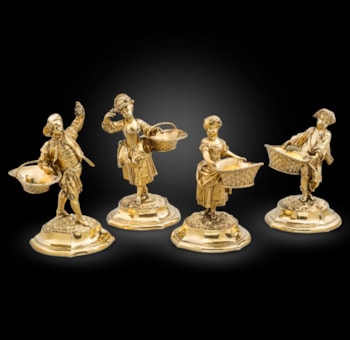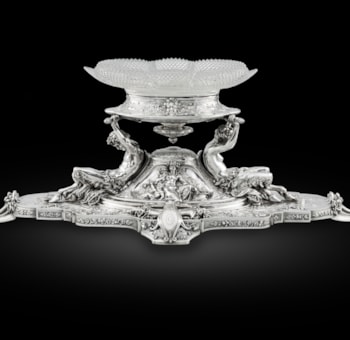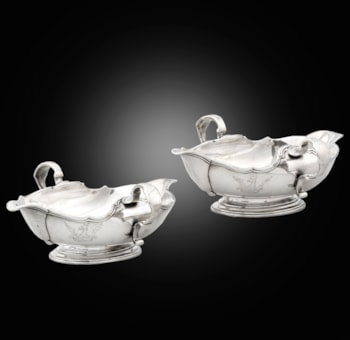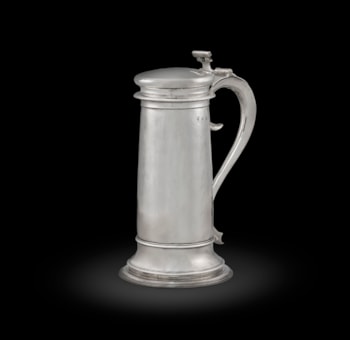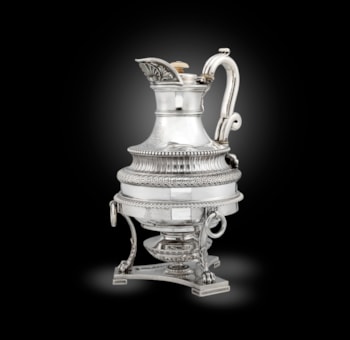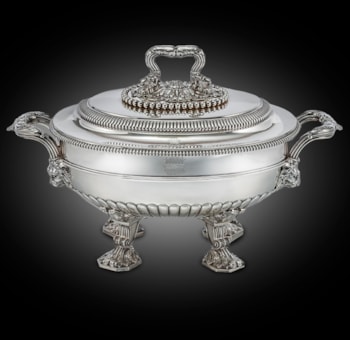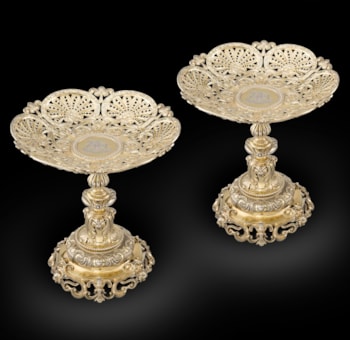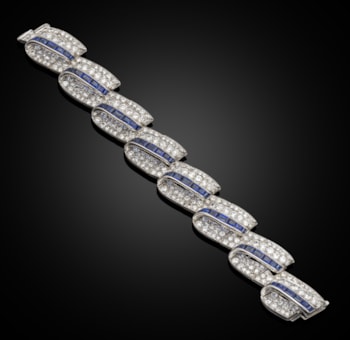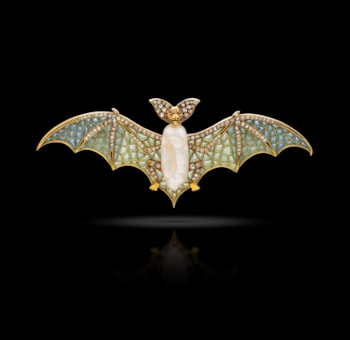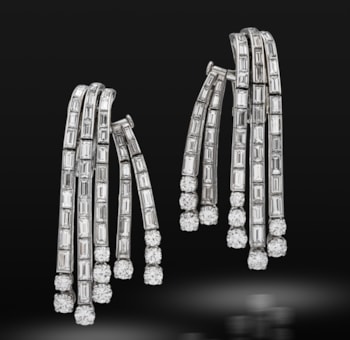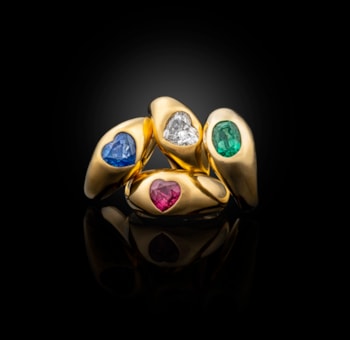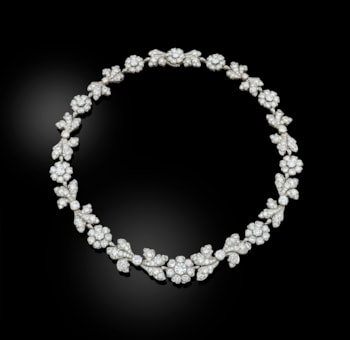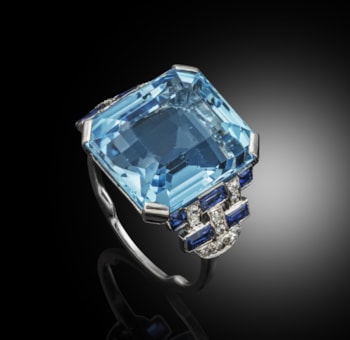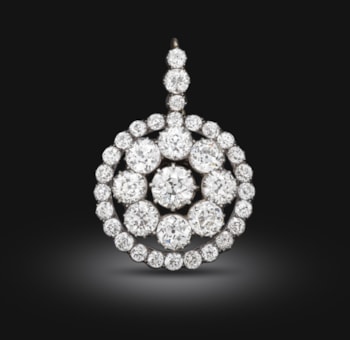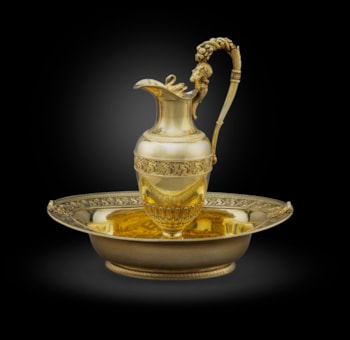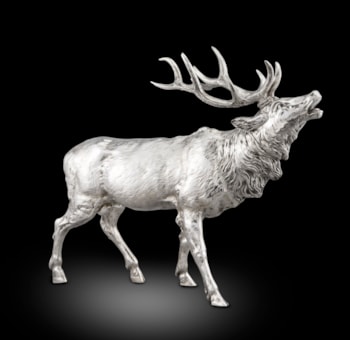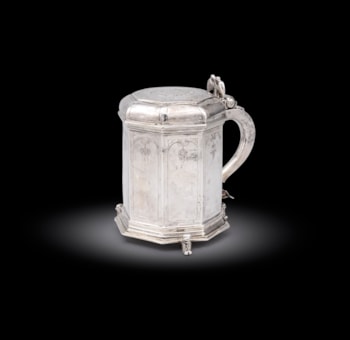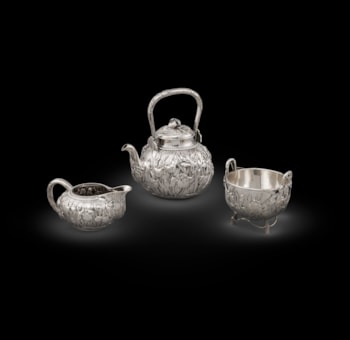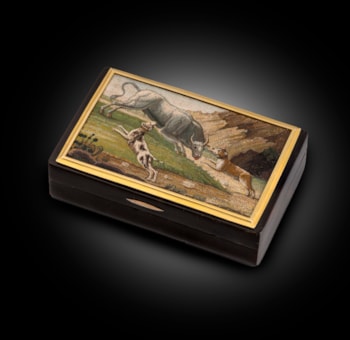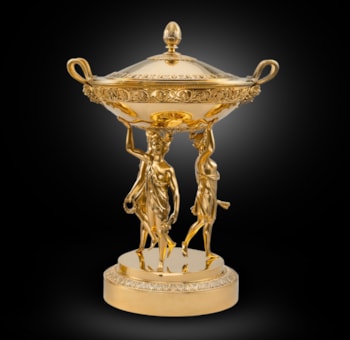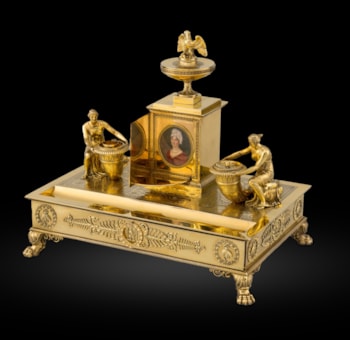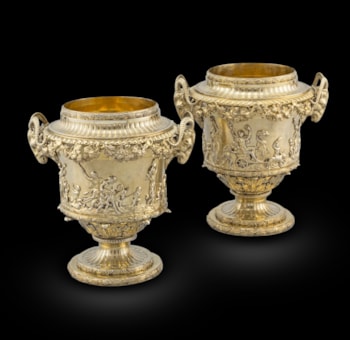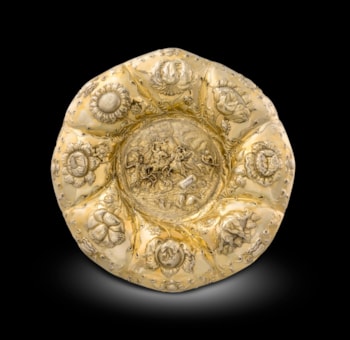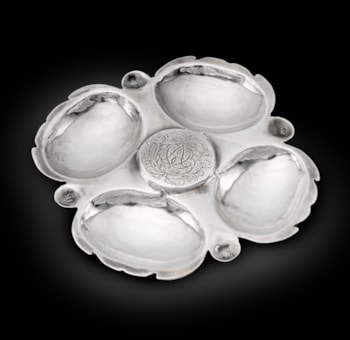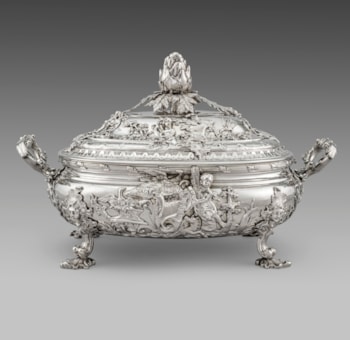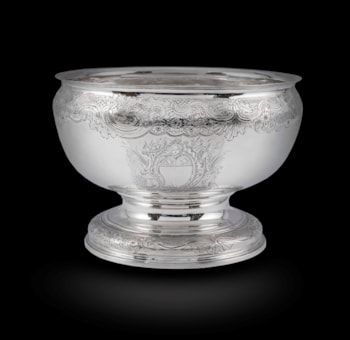The original design for these candlesticks comes from the French group of royal goldsmiths associated with Juste-Aurèle Meissonnier workshops. Pierre François Bonnestrenne was one of these master goldsmiths and his tour de forces is the pair of silver soup tureens commissioned in 1735 for Evelyn Pierrepont, 2nd Duke of Kingston (1711-73).

One of a pair of silver soup tureens commissioned in 1735 for Evelyn Pierrepont, 2nd Duke of Kingston (1711-73).
In 2010 Koopman Rare Art were fortunate to be custodians of the original pair of candlesticks made in Paris 1735 by Bonnetrenne of this model.
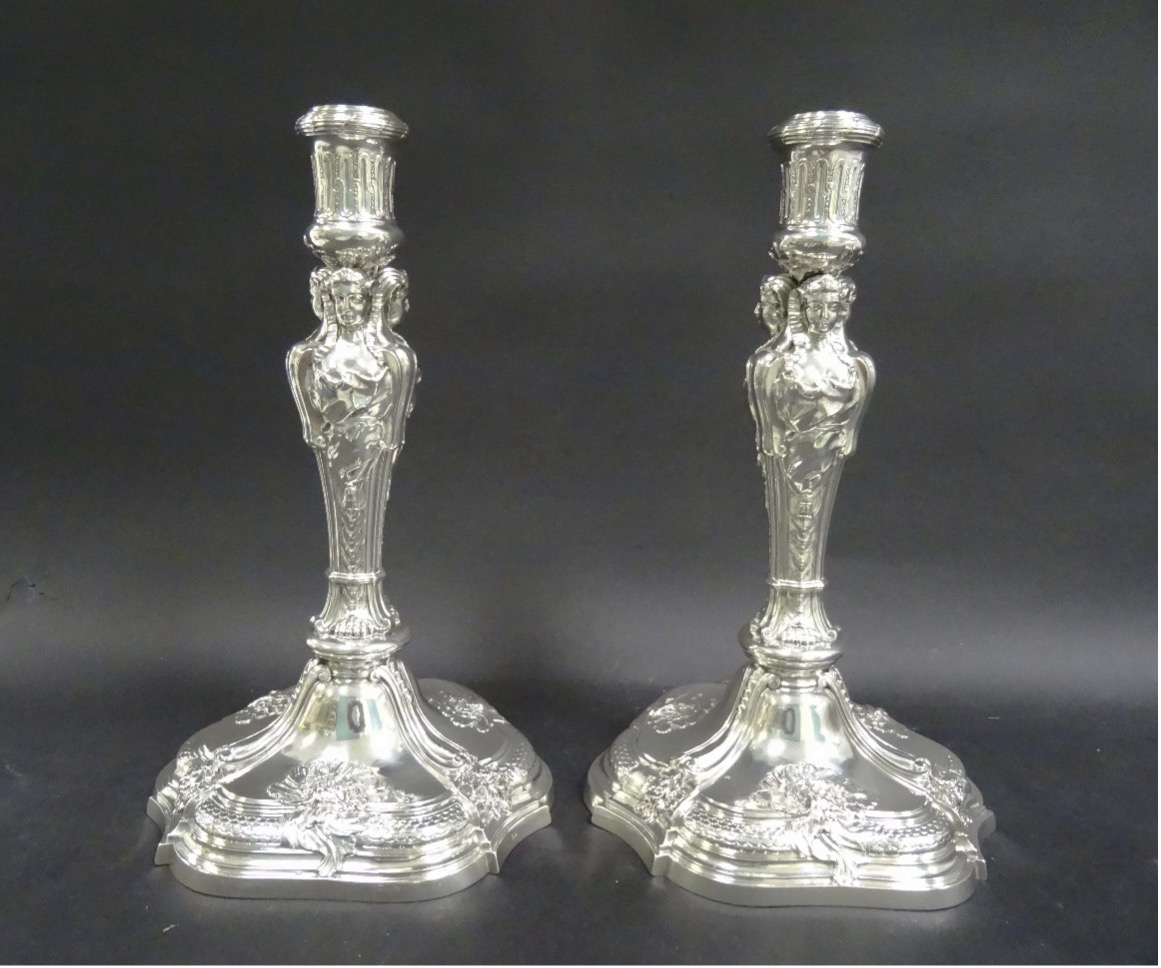
Pierre François Bonnestrenne Paris 1735
Formerly Koopman Rare Art Collection
The design for these candlesticks is also seen on a pair of candelabra marked much later for the French silversmith Robert-Joseph Auguste, Paris, 1767, now in the Metropolitan Museum, New York (48.187.389a,b). Auguste used the design again for the candelabra in the service ordered by George III for use at Hanover in the 1770s.
William Lowther, 1st Earl of Lonsdale
William Lowther, 1st Earl of Lonsdale, KG (29 December 1757 – 19 March 1844), also known as Sir William Lowther, 2nd Baronet, of Little Preston, from 1788 to 1802, and William Lowther, 2nd Viscount Lowther, from 1802 to 1807, was a British Tory politician and nobleman known for building Lowther Castle.
Lowther was the eldest son of Rev. Sir William Lowther, 1st Baronet, of Little Preston and Swillington, and his wife Anne Zouch. His younger brother was Sir John Lowther, 1st Baronet, who also married a daughter of the 9th Earl of Westmorland. His father, an ordained priest who served as rector of Swillington from 1757 to 1788, inherited the estate of Swillington in 1763, upon the death of his first cousin Sir William Lowther, 2nd Baronet.
His father, a son of Christopher Lowther, was a grandson of Sir William Lowther. His maternal grandparents were Charles Zouch, vicar of Sandal Magna, and the former Dorothy Norton (daughter of Gervase Norton). Through his mother, his uncles were Henry and Thomas Zouch.
He was educated at Westminster, 1771, and Trinity College, Cambridge, 1776.
 Lowther Castle
Lowther Castle
Like many members of the Lowther family, he followed the politics of his cousin, Sir James Lowther, 5th Baronet (later the 1st Earl of Lonsdale), but he seems to have shown a tendency towards independence. Lowther was briefly Member of Parliament for Appleby in 1780, for Carlisle from 1780 to 1784 and for Cumberland from 1784 to 1790. In 1796, he was returned as Member of Parliament for Rutland, holding the seat until 1802.
On 15 June 1788, he succeeded his father as the second baronet, of Little Preston. In 1802, he inherited by special remainder the titles of Viscount Lowther and Baron Lowther from his third cousin twice removed, the 1st Earl of Lonsdale of the first creation, as well as his immense estates. He was also appointed to the northern Lord Lieutenancies of Cumberland and Westmorland. In 1807, Lowther was himself created Earl of Lonsdale and appointed a Knight of the Garter.
A coal magnate, he spent £200,000 on the Lowther estate and built a new Lowther Castle. A Tory in politics, he seems to have been tolerant and well-liked, disdaining Sabbatarianismand serving as patron for a number of painters and authors, including William Wordsworth.
Personal life
On 12 July 1781, Lord Lonsdale was married to Lady Augusta Fane (died 1838), the eldest daughter of John Fane, 9th Earl of Westmorland and, his first wife, Augusta Bertie (eldest daughter and co-heiress of Lord Montagu Bertie, fourth son, by his second wife, of Robert Bertie, 1st Duke of Ancaster and Kesteven). Together, they were the parents of six children:
William Lowther, 2nd Earl of Lonsdale (1787–1872), who never married, but had at least three illegitimate children he acknowledged.
Hon. Henry Cecil Lowther (1790–1867), who married Lady Lucy Eleanor Sherard, daughter of Philip Sherard, 5th Earl of Harborough.
Lady Elizabeth Lowther (d. 1869), who died unmarried.
Lady Mary Lowther (1785–1863), who married Maj.-Gen. Lord Frederick Cavendish-Bentinck, son of the 3rd Duke of Portland, on 16 September 1820. Lady Mary, an amateur artist, was tutored by Joseph Farington and Peter de Wint.
Lady Anne Lowther (d. 1863), who married Sir John Beckett, 2nd Baronet on 20 January 1817.
Lady Grace Caroline Lowther (d. 1883), who married William Vane, 3rd Duke of Cleveland on 3 July 1815.
Lowther also enjoyed fox hunting, serving as Master of the Cottesmore Hunt from 1788 to 1802 and 1806 to 1842.
Lord Lonsdale died at York House, Twickenham on 19 March 1844
William, 1st Earl of Lonsdale (1757-1844), by descent to
Lancelot, 6th Earl of Lonsdale (1867-1953), sold
Christie's, London, 19-20 February 1947, lot 261, purchased by Holmes Ltd., 29 Old Bond Street, London W1 (£580)
Probably David Orgell, Beverly Hills, late 1970s/early 1980s
Koopman Rare Art 2022
Private Collection
Son of Thomas Storr of Westminster, first silver-chaser later innkeeper, born 1771. Apprenticed c'1785. Before his first partnership with William Frisbee in 1792 he worked at Church Street, Soho, which was the address of Andrew Fogelberg. This is also the address at which Storr's first separate mark is also entered. First mark entered as plateworker, in partnership with William Frisbee, 2 May 1792. Address: 5 Cock Lane, Snow Hill. Second mark alone, 12 January 1793. Address: 30 Church Street, Soho. Third mark, 27 April 1793. Fourth 8 August 1794. Moved to 20 Air Street, 8 October 1796, (where Thomas Pitts had worked till 1793). Fifth mark, 29 November 1799. Sixth, 21 August 1807. Address 53 Dean Street, Soho. Seventh, 10 February 1808. Ninth, 21 October 1813. Tenth, 12 September 1817. Moved to Harrison Street, Gray's Inn Road, 4 March 1819, after severing his connection with Rundell, Bridge and Rundell. Eleventh mark, 2 September 1883. Address: 17 Harrison Street. Twelfth and last mark, 2 September 1833. Heal records him in partnership with Frisbee and alone at Cock Lane in 1792, and at the other addresses and dates above, except Harrison Street. Storr married in 1801, Elizabeth Susanna Beyer of the Saxon family of piano and organ builders of Compton Street, by whom he had ten children. He retired in 1838, to live in Hill House in Tooting. He died 18 March 1844 and is buried in Tooting Churchyard. His will, proved 3 April 1844, shows an estate of £3000. A memorial to him in Otely Church, Suffolk was put up by his son Francis the then incumbent of the parish. For full details of Storr's relationship with Rundell, Bridge and Rundell please see N.M. Penzer, 1954 or Royal Goldsmiths, The Art of Rundell and Bridge, 2005.
Storr's reputation rests on his mastery of the grandoise neo-Classical style developed in the Regency period. His early pieces up to about 1800 show restrained taste, although by 1797 he had produced the remarkable gold font for the Duke of Portland. Here, however the modelling of the classical figures must presumably have been the work of a professional sculptor, as yet unidentified, and many of the pieces produced by him for Rundell and Bridge in the Royal Collection must have sprung from designs commissioned by that firm rather than from his own invention. On the other hand, they still existed in his Harrison Street workshop, until destroyed in World War II, a group of Piranesi engravings of classical vases and monuments bearing his signature, presumably used as source material for designs. The massiveness of the best of his compositions is well shown in the fine urn of 1800 at Woborn Abbey, but the Theocritus Cup in the Royal Collection must be essentially ascribed to the restraint of its designer John Flaxman, while not denying to Storr its superb execution. Lord Spencer's ice pails of 1817 show similar quality. Not all Storr's work however was of classical inspiration. The candelabra of 1807 at Woburn derive from candlesticks by Paul Crespin of the George II period, formerly part of the Bedford Collection, and he attempted essays in floral rococo design from time to time, which tend to over-floridity. On occasions the excellence of his technical qualities was marred by a lack of good proportions, as in the chalices of the church plate of St Pancras, 1821. In spite of these small lapses there is no doubt that Storr rose to the demands made upon him as the author of more fine display plate than any other English goldsmith, including Paul De Lamerie, was ever called upon to produce.
You May Also Like




